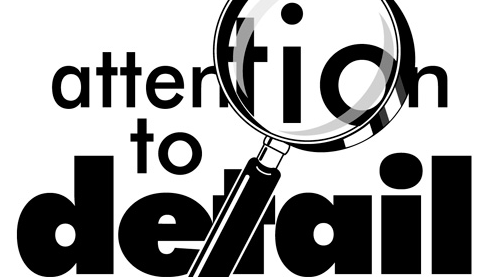
High Reliability Organization Tools
Our toolbox for making us safer and more reliable in high-risk situations is built on the acronym SAFE.
These behaviors and tools should have an even greater impact on safety as they can be applied to a wide variety of work settings and situations. No matter what you do at MedStar, practicing these behaviors and tools will make you safer and more reliable.
We selected these behaviors and tools in consultation with experts from other industries, such as aviation and nuclear power, where they have been successfully used to reduce errors and accidents. These are our safety and reliability behaviors, based on our data, selected by us, to fit our culture.
SAFE Tools
Safety Coaches Only: Enter your observations
Support the Team
Practice 200% accountability. Help others to do the right thing and expect that they will help us to do the right thing, too.

Tool: Team Checking
Key to successful Team Checking
Be willing to check others and be willing to have others check usTake advantage of working together- two heads are better than one!
- Check the accuracy of each other’s work
- Identify slips and lapses
- Point out unusual situations or hazards
Team Checking is an easy way to help everyone perform at their best. By practicing Team Checking we take advantage of working together by performing verification of each other’s work- double-check a calculation, proofread a memo, assist with a complicated task, etc. Team Checking can also point out unintended slips and lapses – a supply-room key left on the counter, an order placed in the wrong chart – or work conditions that your colleague might not have noticed, such as a floor that recently was mopped.
Tool: Team Coaching
Discourage and give advice to others when they use unsafe or at-risk behaviors
Coaching is different from checking. The goal of coaching is to provide one of two kinds of feedback:
- Encouraging reinforcement when our peers practice safe or good behaviors. Positive reinforcement makes an individual more likely to perform a behavior again.
- Discouraging reinforcement when our coworkers practice unsafe or at-risk behaviors. Negative reinforcement makes it less likely that an individual will perform the behavior again.
That last one —correcting unsafe or at risk behaviors— can be challenging because it requires approaching a coworker about something they are not doing right. We don’t want to miss the opportunity to address an unsafe or unproductive behavior. “Letting it go” can send the message that the behavior is okay, and we don’t want to positively reinforce unsafe or unproductive behaviors.
Ask Questions
Practice with a questioning attitude and stop in the face of uncertainty. Speak up when you have safety concerns.

Speak Up for Safety Using ARCC
Voice your concerns in a manner of mutual respect.
Use respectful, but persistent, escalation in voicing your concerns. A safety phrase: “I have a concern…”Speak-up for safety using the ARCC technique (Ask, Request a change, voice a Concern, and use Chain of command) was first published in commercial aviation to help first officers (co-pilots) speak up to captains.
- Check the accuracy of each other’s work
- Identify slips and lapses
- Point out unusual situations or hazards
Team Checking is an easy way to help everyone perform at their best. By practicing Team Checking we take advantage of working together by performing verification of each other’s work – double-check a calculation, proofread a memo, assist with a complicated task, etc. Team Checking can also point out unintended slips and lapses- a supply-room key left on the counter, an order placed in the wrong chart – or work conditions that your colleague might not have noticed, such as a floor that recently was mopped.
Tool: Team Coaching
Request a change
Voice a Concern
(If all else fails) Use the Chain of command
The technique is intended to start with an earnest question and progressively increases in assertiveness. The idea is to avoid coming on too strong when a simple question can suffice.
Whenever you think that a plan of action is not the best for safety or reliability, start by asking a question. For example: If you think that the dose of a medication is incorrect you could say, “Doctor, did you mean 100 milligrams?” Or, if you think someone is using the wrong cleaning solution, you could say, “Mary, did you mean to use this cleaner for the floor?” Ninety percent of the time just asking a questions will cause the person you are asking to stop and review their actions.
If they do not recognize the problem or continue on the present plan, be more direct by advocating for a change to the plan. If they still do not recognize the problem or continue on the present plan, become even more direct by asserting the safe plan of action. When voicing a concern, use the official “safe word,” which is “concern.” State, “I have a concern” or “I am concerned with…”
Our last resort, if we do not get the desired change, is to use the chain of command. Involve a supervisor or a more senior associate.
Validate and Verify
Do NOT proceed in the face of uncertainty!
If something doesn’t seem right, check it out! This technique is used when YOU have questions about YOUR planned actions.Validate and Verify is the tool we use to apply our critical-thinking skills. First, validate. Think, “Does this make sense to me?” If the answer is “No,” we need to check things out by verifying.
Validate: Does it make sense to me?
Verify: Check it with an independent, expert source.
Stop and Resolve
- If you are uncertain about what you are about to do…
- If you have questions…
- If a team member raises a concern or question…

- Review your plan
- Resolve the concern
- Reassess your actions
When we study events of patient or worker harm, we often learn that the harm was caused because people proceeded in the face of uncertainty. They thought something wasn’t right or didn’t make sense, but they continued anyway.
It is CRITICAL that we STOP and RESOLVE when we think something is just not right.
Focus on Tasks
Practice STAR. Pay attention to details. Self-check when doing rote or routine tasks. Pause and self-check when multitasking, distracted, fatigued or stressed.

Stop
Pause for one to two seconds to focus your attention on the task at hand.
STOP is the most important step. It gives your brain a chance to catch up with what your hands are getting ready to do.
Think
Consider the action you’re about to take.
Act
Concentrate and carry out the task.
Review
Check to make sure that the task was done right and that you got the right result.
STAR was developed in the early 1970s in California to help prevent school children from acting impulsively. The children were coached to stop and think about the consequences before acting. Two professional groups then adopted STAR – aircraft pilots and nuclear power operators. These are professions where pressing the wrong button without thinking about can result in very bad consequences very quickly.
People who develop a good habit using STAR use the technique hundreds of times a day because it only takes seconds to do. The best times to use STAR are when going from thought to action – identifying a patient, entering data into a device or computer, changing a setting, connecting tubing or leads, and anytime before taking action with a patient.
Effective Communication
Communicate complete and accurate information in a timely and appropriate manner.

Read/Repeat-Backs
Use three-part communication to ensure understanding:
- Sender communicates an order, request or information to a receiver.
- Receiver repeats or reads back the order, request or information to the sender.
- Sender acknowledges the accuracy of the read or repeat-back. If not correct, sender repeats/clarifies the communication.
Effective Hand-Offs
Use a content format when handing off patients or projects.
To ensure that complete and accurate information is communicated when responsibility for a patient, project or task transfers from one individual to another.
Hand-off habits
- You own it until you hand it off to an appropriate person.
- If you accept a hand off for someone else, you own it until you hand it off to that someone else.
- Use a content-format approach.
Communication Clarifiers
Utilize phonetic, numeric and general clarifiers to communicate clearly. SBAR is a good example of content formatting – a structure to aid in remembering specific types of information that should be communicated. Each letter stands for information that is important to communicate in a handoff.
Situation
What is the situation, patient or project?
Background
What is the important information, problems and precautions?
Assessment
What is your read of the situation, problems and precautions?
Recommendation
What is your recommendation, request or plan?
5 Principles of HROs
Three Principles of Anticipation
Preoccupation with Failure
Regarding small, inconsequential errors as a symptom that something’s wrong
Sensitivity to Operations
Paying attention to what’s happening on the front-line
Reluctance to Simplify
Encouraging diversity in experience, perspective, and opinion
Two Principles of Containment
Commitment to Resilience
Developing capabilities to detect, contain, and bounce-back from events that do occur
Deference to Expertise
Pushing decision making down and around to the person with the most related knowledge and expertise